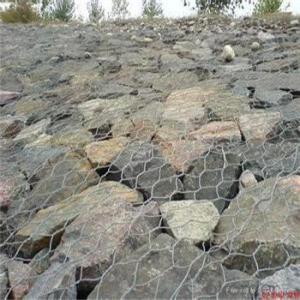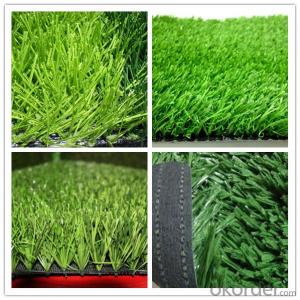3 4 Aluminum Bar Stock
3 4 Aluminum Bar Stock Related Searches
Led Light Bulbs For Ceiling Fixtures Led Lamps For Ceiling 42 In Ceiling Fan With Light Aluminum Coil Stock For Gutters Aluminum Foil For The Grill Hole Saw For Aluminum Plate Aluminum Tread Plate For Trailer Bow Plate For Aluminum Boat Aluminum Foil For Grow Room Aluminum Foil For Joint PainHot Searches
Stock Price For Aluminum Aluminum Coil Stock For Sale Aluminum Gutter Coil For Sale Used Aluminum Scaffolding For Sale 1/4 Aluminum Plate For Sale Aluminum Bar Stock For Sale Aluminum Round Stock For Sale Aluminum Diamond Plate For Sale Aluminum Scaffolding For Sale Craigslist 6061 Aluminum Plate For Sale Aluminum Dock Plate For Sale 7075 Aluminum Plate For Sale Aluminum Tread Plate For Sale Aluminum Checker Plate For Sale Aluminum Plate For Sale Near Me Plate Aluminum For Sale Aluminum Plate For Sale Aluminum Square Stock For Sale Aluminum Flat Stock For Sale Billet Aluminum Stock For Sale3 4 Aluminum Bar Stock Supplier & Manufacturer from China
Okorder.com is a professional 3 4 Aluminum Bar Stock supplier & manufacturer, offers integrated one-stop services including real-time quoting and online cargo tracking. We are funded by CNBM Group, a Fortune 500 enterprise and the largest 3 4 Aluminum Bar Stock firm in China.Hot Products
FAQ
- Aluminum sheets possess a modulus of elasticity, commonly referred to as Young's modulus, which typically ranges at approximately 69 GPa (gigapascals) or 10 million pounds per square inch (psi). This numerical figure signifies the extent of stiffness and rigidity exhibited by the material. Nevertheless, it is crucial to acknowledge that the modulus of elasticity may experience slight variations contingent upon the precise alloy composition and tempering of the aluminum sheet.
- Aluminum sheets are capable of being used for insulation purposes. Due to its high thermal conductivity, aluminum serves as an efficient heat conductor. Nevertheless, in order to enhance insulation efficacy, aluminum sheets are typically combined with other substances. One common example is aluminum foil insulation, which involves combining aluminum foil with materials like foam or fiberglass to establish a heat transfer barrier. The reflective nature of aluminum further aids in deflecting radiant heat, thereby amplifying its insulation capabilities. In summary, although aluminum sheets alone may not offer ample insulation, they can be effectively utilized in conjunction with other materials to construct insulation systems suitable for diverse applications.
- Right now I have got some problems on how to machine high purity aluminium machinery,are thery any suggestions to promote for this kind of consecutive issue?
- Aluminum okorder is a soft, silvery-white metal. In high-purity aluminum nearly all impurities have been removed. It is 99.99 percent pure and is machined like other grades of aluminum. To process aluminum for various applications, the manufacturer heats the aluminum in a smelter and then forms it into ingots (large blocks) or billets (log-shaped rods). Using rolling mills, workers machine ingots into aluminum plates, sheets or foils. Dies machine ingots or billets into extrusions or forgings.
- How does 1200X1200X15 6061 aluminum, CNC processing, the plane degree can reach the number of my clients to 0.2, but I used to use the MS 1000X1500X70 to the material processing, the flatness is only 1, please experienced friend to help, thank you
- Buy aluminum plate before processing, we must plastic, rolling. Processing should leave margin, release the stress, no precision requirements of the hole to do first, after the two plastic. In the semi gold processing, plastic grinding before finishing. We do that every big 700*700*12, and do the flatness down 0.03-005.
- Yes, aluminum sheets are generally easy to clean due to their smooth surface and non-porous nature, allowing for easy removal of dirt, grease, and stains with regular cleaning agents.
- There are several surface treatments available for aluminum sheets that can significantly enhance their corrosion resistance. These treatments include: 1. Anodizing: Anodizing is a widely used surface treatment for aluminum sheets. It involves immersing the aluminum in an electrolyte solution and applying an electric current. This creates a protective oxide layer on the surface of the aluminum, which improves its corrosion resistance. 2. Chromate Conversion Coating: Chromate conversion coating, also known as chemical film or chromating, is another common treatment for aluminum sheets. It involves immersing the aluminum in a solution containing chromate compounds. This forms a thin layer of chromate on the surface, which acts as a barrier against corrosion. 3. Powder Coating: Powder coating is a dry finishing process where a powdered polymer is sprayed onto the aluminum surface and then cured under heat. This creates a durable and corrosion-resistant coating that provides excellent protection against environmental factors. 4. E-coating: Electrophoretic coating, or e-coating, is an immersion-based process in which the aluminum sheet is submerged in an electrically charged paint bath. This attracts the paint particles to the surface, creating a uniform and corrosion-resistant coating. 5. Cladding: Cladding involves bonding a layer of a different metal, such as stainless steel or zinc, to the aluminum sheet's surface. This creates a protective barrier that shields the aluminum from corrosion. 6. Organic Coatings: Applying organic coatings, such as acrylic or polyester paints, to the aluminum surface can provide an effective corrosion-resistant barrier. These coatings form a protective film that prevents moisture and corrosive substances from reaching the aluminum. It is important to note that the choice of surface treatment depends on various factors, including the specific application, environmental conditions, and desired appearance. Some treatments may be more suitable for certain industries or environments, so it is advisable to consult with professionals to determine the most appropriate treatment for a particular application.
- Achieving a mirror-like finish on aluminum sheets involves a series of steps to remove any imperfections and create a smooth, reflective surface. Here are the key processes involved: 1. Surface preparation: Start by thoroughly cleaning the aluminum sheet to remove any dirt, grease, or other contaminants using a mild detergent and water. Rinse and dry the surface completely. 2. Sanding: Use progressively finer grits of sandpaper or abrasive pads to remove any scratches, oxidation, or roughness on the aluminum surface. Begin with a coarser grit (around 120-180) and gradually move to finer grits (up to 1000 or higher) to achieve a smoother finish. Sanding should be done in a consistent direction to avoid creating visible scratches. 3. Polishing compounds: Apply a polishing compound or metal polish designed specifically for aluminum surfaces. Use a soft cloth or a buffing wheel to apply the polish and work it into the surface. Apply gentle pressure and move in circular motions to evenly distribute the polish. Repeat this step until the desired level of shine is achieved. 4. Buffing: Use a buffing wheel, preferably made of felt or cotton, to further enhance the shine. Apply a small amount of a high-quality polishing compound to the wheel and carefully buff the aluminum sheet in a consistent manner. Again, use circular motions and maintain a steady, even pressure. 5. Final polishing: To achieve a mirror-like finish, use a specialized aluminum polish or a metal finishing compound. Apply a small amount onto a clean cloth and gently rub the surface in circular motions. This final step helps remove any fine scratches or imperfections, adding a brilliant shine to the aluminum sheet. Remember to clean the aluminum sheet thoroughly after each step to remove any residue or excess polish. Additionally, always follow the manufacturer's instructions when using specific polishing compounds or tools, as they may have specific guidelines for optimal results. By following these steps carefully and patiently, you can achieve a mirror-like finish on aluminum sheets, transforming them into highly reflective surfaces that are both visually appealing and functional.
- To prevent any damage to the surface of aluminum sheets when handling them, there are several steps that can be taken: 1. Use clean gloves or finger cots: It is important to avoid direct contact between bare hands and the aluminum sheets, as hands can contain oils, dirt, or other contaminants that may leave marks on the surface. Wearing clean gloves or finger cots acts as a barrier and prevents any transfer of substances onto the sheets. 2. Utilize protective packaging: Before handling the sheets, consider using protective packaging such as foam or plastic sheets to cover the surface. This provides an additional layer of protection against scratches or abrasions during transportation or storage. 3. Implement proper storage and handling techniques: Store the aluminum sheets in a clean and dry environment, away from any abrasive materials or surfaces. When moving or handling the sheets, ensure they are lifted or supported evenly to prevent bending or distortion that could lead to surface damage. Using appropriate lifting equipment, such as suction cups or clamps, helps distribute the weight evenly and minimizes the risk of harm. 4. Regularly clean the surface: Clean the aluminum sheets on a regular basis using a mild detergent or cleaning solution specifically designed for aluminum. This removes any dirt, grime, or other substances that could potentially cause surface damage. Ensure soft, non-abrasive cleaning tools like microfiber cloths or sponges are used to avoid scratching. 5. Implement quality control measures: Establish quality control measures during the handling process to identify any potential causes of surface damage. Conduct regular inspections to check for signs of harm or defects. Properly train employees involved in the handling process to minimize the risk of surface damage. By following these preventive measures, the chances of surface damage to aluminum sheets during handling are significantly reduced, ensuring they remain in pristine condition and maintain their quality.















































